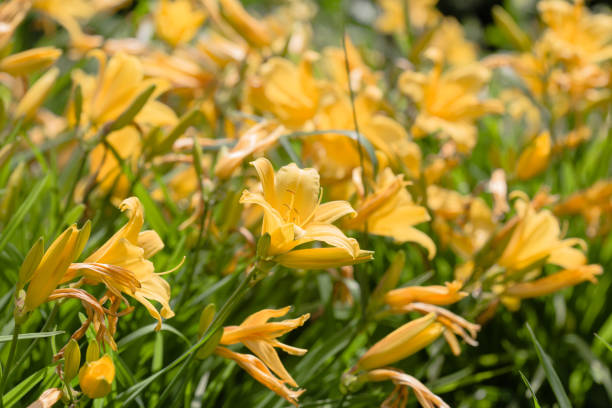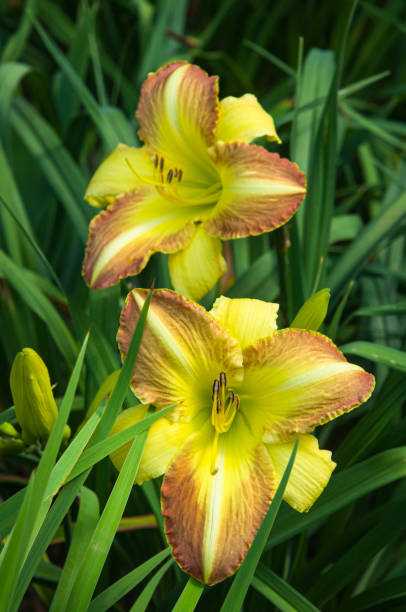Do Daylily Need Full Sun?
Given the name daylily, one would assume that these flowers can only survive in direct sunlight. While daylilies thrive in full sun, they are also one of the most popular shade plants because they can tolerate partial shade. Unlike many other perennials, the daylily is a low-maintenance perennial thrives in a wide range of conditions, including poor soil and drought. Daylilies come in a variety of colors, shapes, and sizes. Daylilies can bloom from late spring through the first frost of fall by combining early, mid-season, late-blooming, and repeat blooming daylilies in a single plant.
Table of Contents
What Will Happen If Daylily Does Not Get Enough Sun?
Daylilies need at least six hours of direct sun per day to thrive, but if they do not receive enough sun, they may begin to decline in health. Daylilies are photosynthetic and need sunlight to produce chloroplasts, the organelles that allow them to convert sunlight into energy. When the chloroplasts are not functioning properly, the plant will not synthesize nutrients and will eventually die.
If you notice that your daylilies are not thriving, it is important to give them more sun. You can transfer them to a brighter spot in your garden, or you can provide them supplemental light using a green lightbulb or fluorescent light. If you notice any wilting or yellowing, it is also a sign that your daylilies are not getting enough sun exposure and should be moved to a brighter location.

How Much Sun Do Day Lilies Require to Grow?
It’s best to plant daylilies in full sunlight or partial shade that gets 4-6 hours of sun a day, even though most daylilies like full sun. Sometimes they bloom in the shade of tall trees. When there is some shade, the daylily flowers will face away from it and toward the sky. Avoid low wet places where water gathers in rainy weather and high dry places over ledges where the soil is thin.
The popularity of daylilies can be attributed to the fact that their flowers remain open for a significantly more extended period than other flowering plants. They are simple to establish, grow well with little care, and remain viable throughout the winter, making them a great choice for a wide range of planting zones. Daylilies should be purchased locally because each variety performs best in or near its natural habitat.
Can Daylily Survive Shade?
They can do well in slightly shady areas. However, they may produce fewer flowers. If they stayed longer in the full shade, they might be experienced wilting. Daylilies should not be planted under trees because the shade will stunt their growth, and the tree roots will obstruct the lilies’ extensive root system.
If you plan to grow companion plants and your daylilies, select plants with the exact sun requirements. To avoid creating shade in your sunny spot, avoid planting anything taller than your daylilies. Some plants can be strategically planted to make the bloom season last longer. They will bloom about two weeks later when they are in the shade. As the sun gets hotter, dark-colored blooms lose their color. This is why they need some shade because the color fades. For pink flowers to get their full color, they need to be in full sun.

Daylily Care Instructions
It takes one day for a daylily flower to open and bloom. Snap off the spent flowers, careful not to disturb nearby buds to keep the plants looking their best. Immediately after the scapes have finished blooming, remove them from the plants to don’t put their energy into seed production.
Some varieties of daylilies remain green all winter long, despite their leaves turning yellow in the fall. If the plants are not evergreen, the best time to remove the spent foliage is in the spring, which can be easily raked away.
Daylilies benefit from an annual application of granular all-purpose fertilizer in the spring, depending on the soil’s fertility. Scatter the fertilizer around the plant’s base when removing the previous year’s foliage.
Mulching daylilies with shredded bark, shredded leaves, or other organic materials is beneficial. Keeping the soil moist is an easy method of controlling weeds.
Even though daylilies can be left alone for many years, dividing them every five years will yield more flowers. This is a project to tackle after the plants have finished blooming in the late summer. Place the entire plant on a tarp and remove the roots. The clump should be cut or pulled into manageable pieces. Before replanting, trim the foliage to a height of 5 or 6 inches with scissors.
Plant 12-18 inches apart, with the crown 1 inch below the soil surface. They are pest-free. A new daylily disease, rust, has been spreading across the county, killing many plants. Keep daylilies open and airy, remove diseased foliage, and water plants when rain is scarce.
